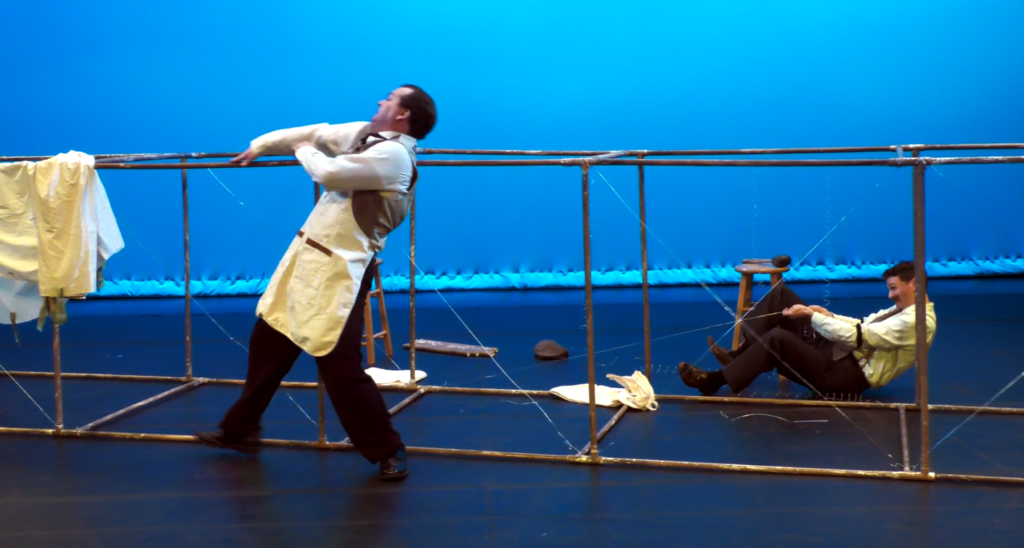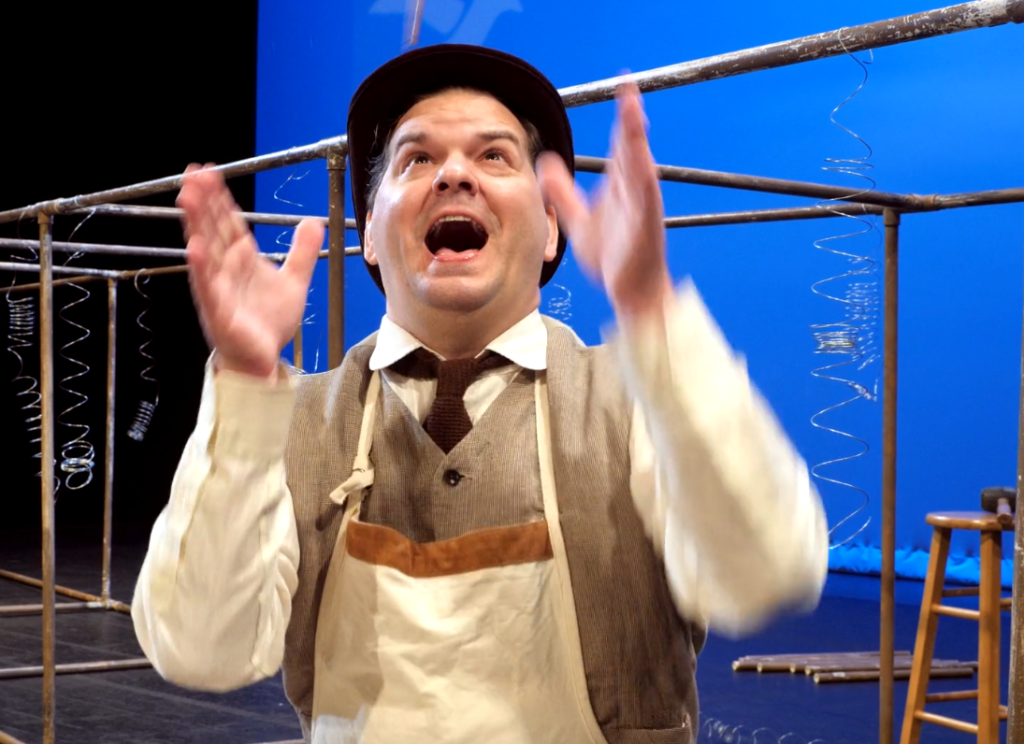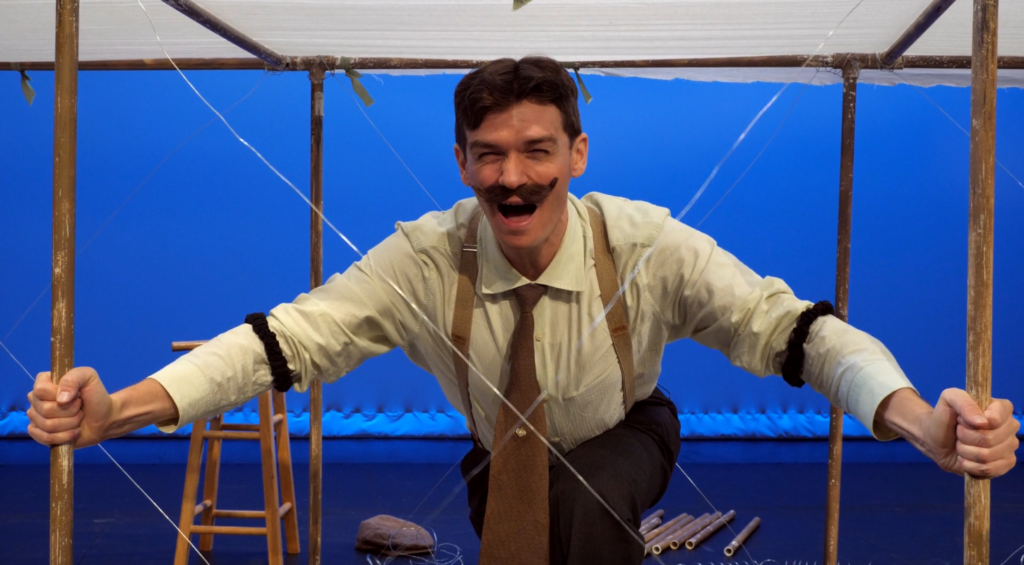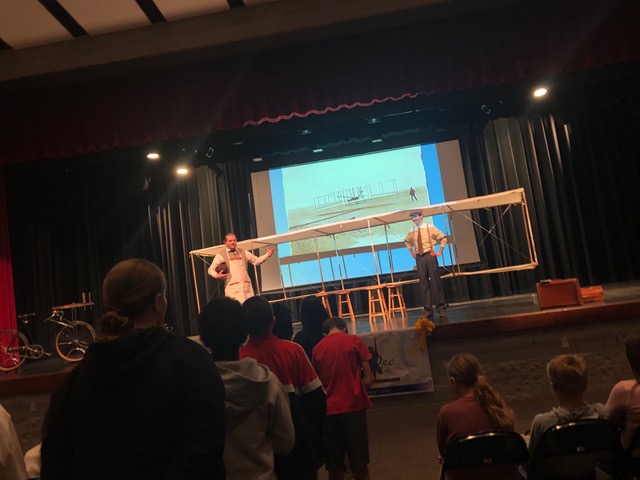The Wrights of Passage
Devised from the journals of Wilbur and Orville Wright
CAST: Matthew Hager and David Sebren
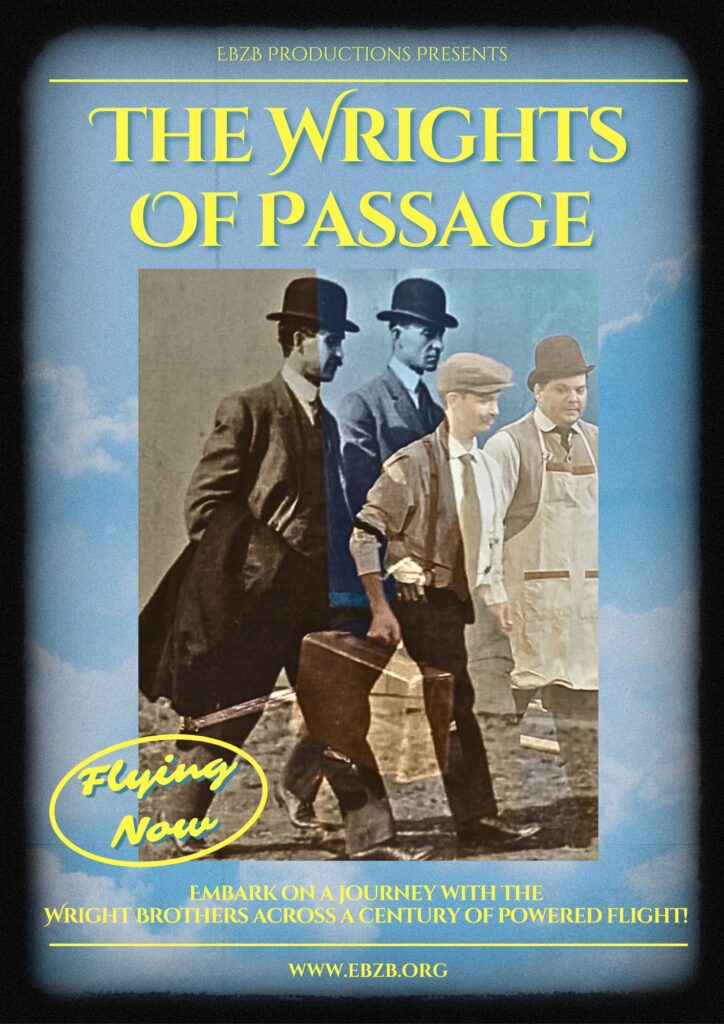
DESCRIPTION
Embark on a journey with the Wright Brothers across a century of powered flight inThe Wrights of Passage, a story of the passion and focus of two brothers who want to prove it is possible for man to fly. The brothers make the first powered flights in 1903 in a machine of their own invention and construction. The Wrights’ discoveries provide the foundation and technology still used today in modern aviation and space exploration.
Originally commissioned by the North Carolina Association of Educators, this family drama celebrates the first one hundred years of flight. Speaking the Wrights’ own words and dressed in period costumes, Matthew Hager and David Sebren portray the brothers with enthusiasm and vigor. Wilbur and Orville Wright construct an abstract replica of the famous flyer while revealing their biographies and recounting tales of their inspirations, discoveries, failures, achievements and successes. Audience members may also participate by interjecting aviation and space exploration highlights from previous centuries and the current one*. A study guide and an audience etiquette guideline is available to enhance the theatre-going experience. Wrights of Passage is a timely theatrical event made especially for aviation enthusiasts of all ages.
THEMES
Aviation, Character, Education, Engineering, Math, North Carolina, Ohio, Perseverance, Science, STEM, Technology, U.S. History.
AUDIENCE
General Adult; Student Matinee for Grades 1-8, with connections to 4th- and 8th-grade curricula.
BOOKING
The standing ovation The Wrights of Passage received from the 1200 delegates at our state convention was well deserved! You entertain and educate. Bravo!
-North Carolina Association of Educators
PRESENTER TOOL KIT
Run Time: 50 minutes
National Park Service From Wheel To Wing – Wright Brothers Lesson Plan
*Audience members participate in Wrights of Passage. Presenters should select 16 audience members to participate as readers during the show. The readers are given cards that include milestones and landmark achievements in the history of flight. Readers must be comfortable reading and speaking in front of an audience and should be eight years old or above. Readers must come to the performance area 15 minutes before the performance for preparation. When readers are used, the venue should provide a microphone, a stand, and an amplifier for the readers.
